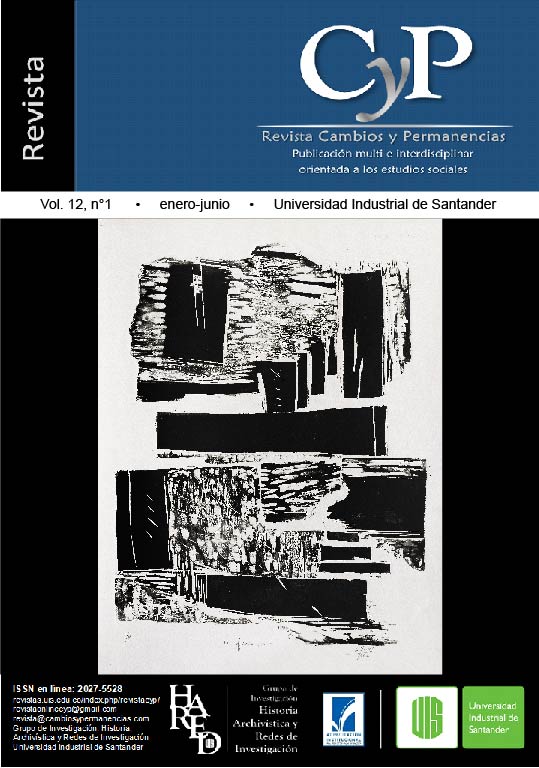Semiotic analysis of the social representations on the armed conflict, the peace dialogues and the post-agreement in Colombia
Published 2021-06-30
Keywords
- antagonism,
- dissension,
- peace dialogues,
- value,
- evaluation
How to Cite
Abstract
The chapter aims to describe the social representations of university students about the armed conflict, the peace dialogues and the post-agreement in Colombia.To do so, the researchers focused their analysis on the statements expressed by students from the Universidad Pontificia Bolivariana and Universidad Industrial de Santander in regards to the matter of forgiveness in the context of conflict and post-agreement in Colombia. We, therefore, focused our attention on the statements expresses by victims of the conflict about the social inclusion of the perpetrators as well as comments from students of the Universidad Industrial de Santander on their assessment of peace dialogues between the Government and the FARC-EP. The issue of representation is consolidated on the basis of their understanding of the system of beliefs or values of a given culture that leads enunciators to evaluate social phenomena from different gradients and polarities. The view of representation is analyzed based on Vargas Melgarejo, Charaudeau, Maingueneau, Fontanille, Rosales, among others. Consequently, the discourses of the informants shape their normative system based on their consideration of justice, discontent and hope, as categorical values that define how to live in society. In addition, they offer a broad understanding of conjectural phenomenon that is currently taking place in the country.
Downloads
References
Becerra, A. F. (2014). El conflicto social, un concepto necesario en la educación para la paz. Ra Ximhai: revista científica de sociedad, cultura y desarrollo sustentable, 10(S4), 153-180.
Benítez, G. L. (1998). La percepción sensible en René Descartes. Revista de Filosofía Diánoia, 44(44).
Charaudeau, P. (1997). Le discours d’information médiatique. La construction du miroir social. Paris, Francia: Nathan-INA.
Charaudeau, P. (Ed.). (2005). Diccionario de análisis del discurso. Argentina: Amorrortu Ed.
Cohen, J. J. (1973). La percepción del mundo visual. Buenos Aires, Argentina: Trillas.
Coren, S. (2003). Sensation and perception. Handbook of psychology, 85-108.
Coser, L. A. (1970). Nuevos aportes a la teoría del conflicto social. Buenos Aires, Argentina: Amorrortu.
Coser, L. A., Blass, B., Betancourt, R., Ibarra, F., y Sarto, M. S. (1961). Las funciones del conflicto social. México: Fondo de Cultura Económica.
Fontanille, J. (2001). Semiótica del discurso. Perú: Fondo de Cultura Económica.
Greimas, A. J. (1989). Del Sentido II. Ensayos Semióticos. Madrid, España: Gredos.
Melgarejo, L. M. (2014). Sobre el concepto de percepción. Alteridades, (8), 47-53.
Rallo, E., Fontanille, J., y Lombardo, P. (2005). Dictionnaire des passions littéraires. Francia: Belin.
Rosales, H. (2014). Categorías autodescriptivas y metadescriptivas de las prácticas culturales: la representación del arte en Bucaramanga. IV Congreso Latinoamericano de Semiótica. Centro Cultural Bicentenario de San Luis Potosí, México.

